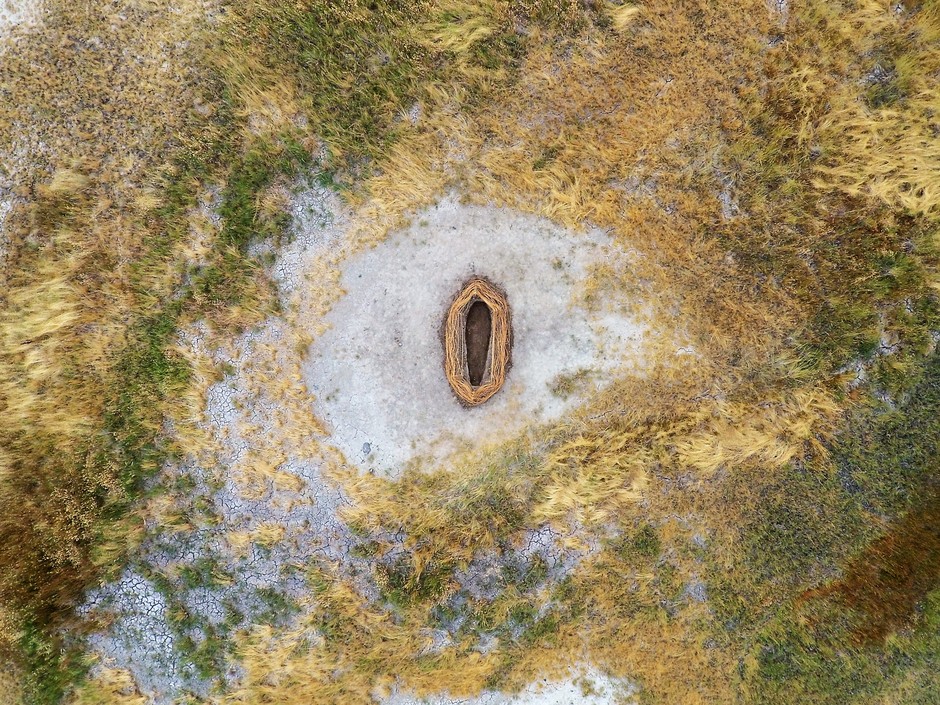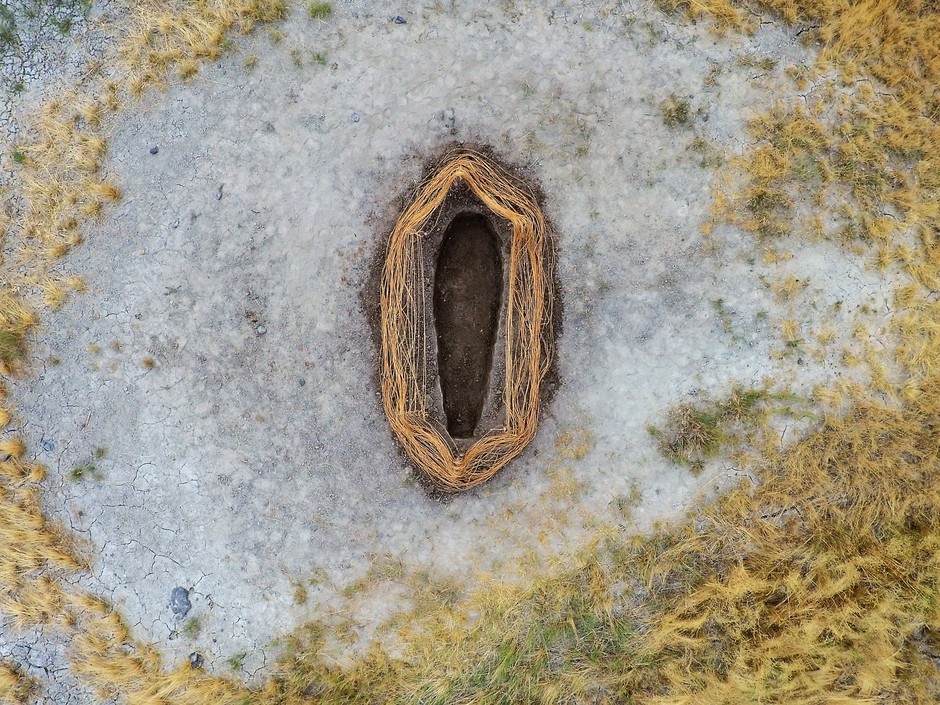January 4: Victory Over Death
♫ Music:
Day 37 - Monday, January 4
Title: VICTORY OVER DEATH
Scripture: I Corinthians 15: 54-57
So when this corruptible shall have put on incorruption, and this mortal shall have put on immortality, then shall be brought to pass the saying that is written, Death is swallowed up in victory. O death, where is thy sting? O grave, where is thy victory? The sting of death is sin; and the strength of sin is the law. But thanks be to God, which giveth us the victory through our Lord Jesus Christ.
Poetry:
Receptionism
by Marjorie Maddox
And do we
think we consecrate,
our contriteness siphoning out
sin through ingestion
of the single drop,
the circle of wheat
haloing mouths?
Does our kneeling
bring him down
again from the wood,
unhinge his stone,
trumpet for ourselves
our catalytic salvation?
Oh, palms clasped
closed, nail-less and unbleeding;
legs stiff from standing
on our own crumbling
feet, there is nothing
of us in the cup
but the waiting
to be washed and eaten.
OVER THE GRAVE
O death, where is thy sting? O grave, where is thy victory?
When standing in front of a grave, the answer seems obvious and inevitable: death's victory is right here in front of me. A seemingly infinite void, albeit one with an all-too-real length and width and depth. The swallower of all, the space that separates us from those we love.
Many of us have cried in front of graves. Many of us recently. The year 2020 has been a year defined by grief. Grief large and small: losing mobility, losing connection to friends and loved ones, losing the ability to worship together, and for all too many, losing a loved one in a year of plague.
Craig Goodworth’s Playa Study is not a grave (even as it may evoke just such a scene). Constructed in the Great Basin Desert, it was not designed to last. It was not meant to house a body; it is the very absence of a body that defines the piece. The negative space, the emptiness, raises the specter of death. And yet, out of the desert, out of the earth, can—and does--spring new life. Goodworth creates a space in between, of the already and the not yet, of meditation and disquiet liturgy.
Marjorie Maddox asks another question:
Does our kneeling
bring him down
again from the wood,
unhinge his stone,
trumpet for ourselves
our catalytic salvation?
Many of us have found ourselves improvising new liturgies, new ways of worshipping, new ways of mourning this year, often mediated by screens and software designed to facilitate efficient work meetings more than celebrate a life or join voices in song to worship an infinite God. But our actions matter, our creativity matters, our love and diligence to each other and our neighbor matters, carrying on faithfully in a desert season.
In John 20, after encountering the empty tomb of Jesus, the disciples return to their homes, but Mary Magdalene remains, weeping, just as Jesus himself had done at the tomb of Lazarus. In both cases, the tears are not meaningless, even if they are not the end of the story. We kneel. We weep, we mourn, but the story doesn’t end in the cold hard measurements of the grave. The absence of a body has become one of “the already:" Christ is risen.
Historically, Advent has been celebrated similarly to Lent: as a time of fasting, of waiting, of prayerfulness and penance. This approach may seem at odds with the cheerful warmth of many of our modern Advent and Christmas traditions, but the parallels are clear and meaningful: as we anticipate the arrival of the Christ child, we are awaiting the one who brings victory over the grave: the pure, innocent sacrifice whose death miraculously causes life to spring from the grave.
When Paul references death being swallowed in 1 Corinthians, he is referencing the prophet Isaiah (Isaiah 25:8), who speaks of the restoration of Israel. Not only does he prophecy the renewal of Israel, its new life, freed from death, but speaks of a God who will “wipe away all tears.” We will continue to cry in seasons of mourning but our tears will be dried, lovingly, by a God who knows the grief of the tomb more intimately than any of his creation ever will. And as Paul speaks in 1 Corinthians, he doesn’t speak of the restoration of Israel — not of nations or wars or political movements — but of something far deeper, unbounded by cold hard borders. It is the restoration of humanity itself, of all who turn toward the Lord, who turn to an empty tomb and run to tell others, as Mary Magdalene did, that “I have seen the Lord."
Prayer:
Lord, give us the clarity of vision and strength of your Spirit so we can stare into the abyss and feel anticipation, not dread. Let us learn to mourn faithfully, to worship creatively, to love actively with death all around. Teach us to live boldly and hopefully in the world, knowing our eyes will one day be dried.
Amen
Luke Aleckson
Professor, Department of Art
Vice-Chair, Faculty Senate 2020-21
Executive Director, Center for Christianity, Culture & the Arts
Biola University
For more information about the artwork, music, and poetry selected for this day, we have provided resources under the “About” tab located next to the “Devotional” tab.
About the Artwork:
Playa Studies (2 views)
Craig Goodworth
Color photographs
2017
Site specific land-based artwork
Great Basin Desert, Oregon
Playa Studies is artist Craig Goodworth’s 2017 site-specific, land-based artwork made during a four-week residency in the Great Basin Desert in Oregon. Goodworth’s work focuses on nature, natural processes, and the environment. This installation at Cox Butte harkens back to 1800 pioneer practices of allowing bodies to return to the earth via natural burial processes with no vaults, mason-made markers, and simple wooden coffins. Craig Goodworth’s practice straddles boundaries between animal and human, body and word, ecology and religion, art and life.
https://www.restlawnonline.com/2017/04/natural-burial-at-rest-lawn.html
http://craiggoodworthart.squarespace.com/installation/playa-studies-2017/
About the Artist:
Craig Goodworth is an Oregon-based artist working in installation and poetry. His practice encompasses drawing, object-making, research, teaching and farm labor. He has received fellowships in art and writing, including a Fulbright to the Slovak Republic (2015). Along with exhibiting his artworks nationally and internationally, he’s engaged in various collaborations and residencies relating art to science and religion. Goodworth holds Master’s Degrees in fine art and sustainable communities. Originally from Arizona, his interests include land, place, mysticism and folk traditions.
http://craiggoodworthart.squarespace.com/
Music #1:
“String Quartet No. 1, "Calvary": II. quarter note = 54” from the album Perkinson: A Celebration
Performers:
Conductor Paul Freeman pursued an active career on both sides of the Atlantic. He received his Ph.D. from the Eastman School of Music and later studied in Berlin as a Fulbright Scholar. Freeman was the music director of the Chicago Sinfonietta, which he founded in 1987. In 1996, he was also appointed music director and chief conductor of the Czech National Symphony Orchestra in Prague. Other positions he held include music director of the Victoria (Canada) Symphony, principal guest conductor of the Helsinki Philharmonic, associate conductor of the Dallas and Detroit symphony orchestras, and music director of the Opera Theatre of Rochester (New York). One of America's most-recorded conductors, Freeman has a discography of over 200 releases. One of his earliest recordings to attract critical attention was a series for Columbia tracing the accomplishments of Black symphonic composers. Freeman retired in 2011, donating his collection of scores and other materials to the Center for Black Music Research at Columbia College Chicago. In this recording, Freeman conducts the New Black Repertory Ensemble Quartet.
https://www.allmusic.com/artist/paul-freeman-mn0000751144/biography
Composer:
Coleridge-Taylor Perkinson (1932-2004) was an innovative African-American composer whose interests spanned the worlds of jazz, dance, pop, film, television, and classical music. He received bachelor's and master's degrees from the Manhattan School of Music. Perkinson co-founded the Symphony of the New World in New York in 1965 and later became its Music Director. He was also Music Director of Jerome Robbins's American Theater Lab and the Alvin Ailey American Dance Theater. Perkinson composed a ballet for Ailey entitled For Bird, With Love, which was inspired by the music of jazz great Charlie Parker. Perkinson wrote a great deal of classical music, but was equally well-versed in jazz and popular music. https://en.wikipedia.org/wiki/Coleridge-Taylor_Perkinson
Music #2:
Messiah, HWV 56, Pt. 3: 5. Then Shall It Be Brought To Pass
Lyrics:
Then shall be brought to pass the saying that is written,
Death is swallowed up in victory.
Music #3:
Messiah, HWV 56, Pt. 3: 6. O Death, Where Is Thy Sting?
Lyrics:
O death, where is thy sting?
O grave, where is thy victory?
The sting of death is sin;
and the strength of sin is the law.
Music #4:
Messiah, HWV 56, Pt. 3: 7. But Thanks Be to God
Lyrics:
But thanks be to God,
which giveth us the victory
through our Lord Jesus Christ.
Messiah Performers/Musicians/Lyricists/Composer:
Unless otherwise noted, all Messiah performances are by Margaret Marshall, Catherine Robbin, Anthony Rolfe-Johnson, Robert Hale, Charles Brett, Saul Quirke, the English Baroque Soloists, and the Monteverdi Choir conducted by Sir John Eliot Gardiner. Biographical information for the performers and musicians can be found by clicking here.
About the Poet:
Marjorie Maddox (b. 1959) is an American poet, fiction writer, and editor. Maddox earned a BA at Wheaton College, an MA at the University of Louisville, and an MFA at Cornell University. Maddox’s poems often explore history, the body, and spirituality. Professor of English and Creative Writing at Lock Haven University, Maddox has published 11 collections of poetry, including the following: Transplant, Transport, Transubstantiation (Yellowglen Prize); True, False, None of the Above (Illumination Book Award Medalist); Local News from Someplace Else; and Perpendicular As I (Sandstone Book Award). She has also published a short story collection, four children’s and YA books, and 600+ stories, essays, and poems in journals and anthologies. Her book Begin with a Question is forthcoming from Paraclete Press in 2021.
www.marjoriemaddox.com
About the Devotion Author:
Luke Aleckson
Professor, Department of Art
Vice-Chair, Faculty Senate 2020-21
Executive Director, Center for Christianity, Culture & the Arts
Biola University
Luke Aleckson is an Assistant Professor of Art at Biola University and is currently the Executive Director of the CCCA. He received his MFA from the School of the Art Institute of Chicago in sculpture and a BS in art from the University of Northwestern, St. Paul, Minnesota. Past positions have included serving as Department Chair and Professor of Art and Design at the University of Northwestern and the Director of Denler Gallery in St. Paul. Past exhibitions of his artwork have been held nationally, at venues such as the Chicago Cultural Center, the Minneapolis Institute of Arts and the Suburban in Oak Park, Illinois. He maintains an active art practice in which he explores sculpture, digital modeling, video art, and installation art.

